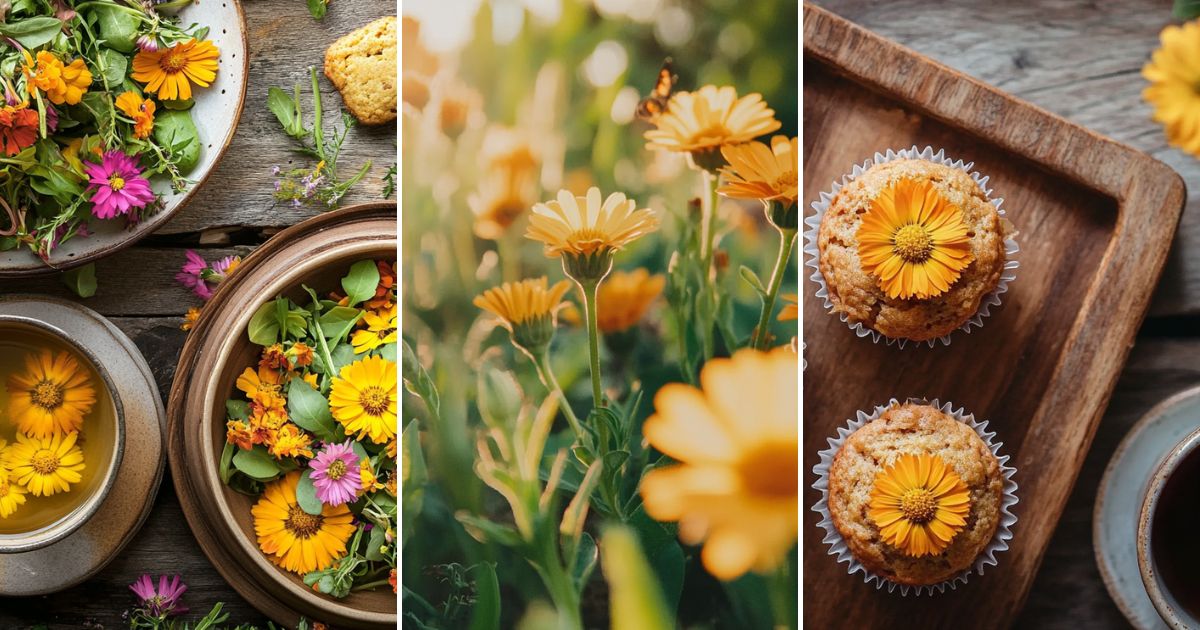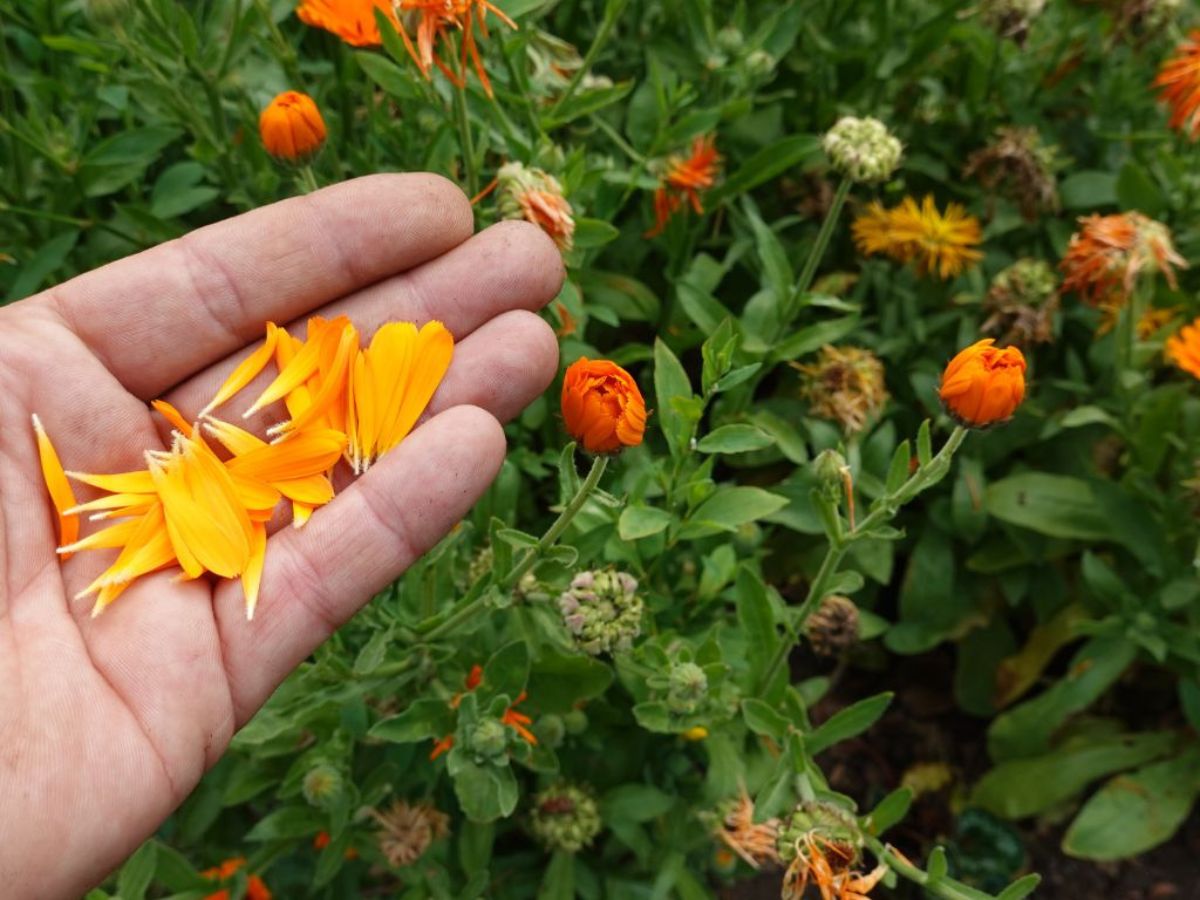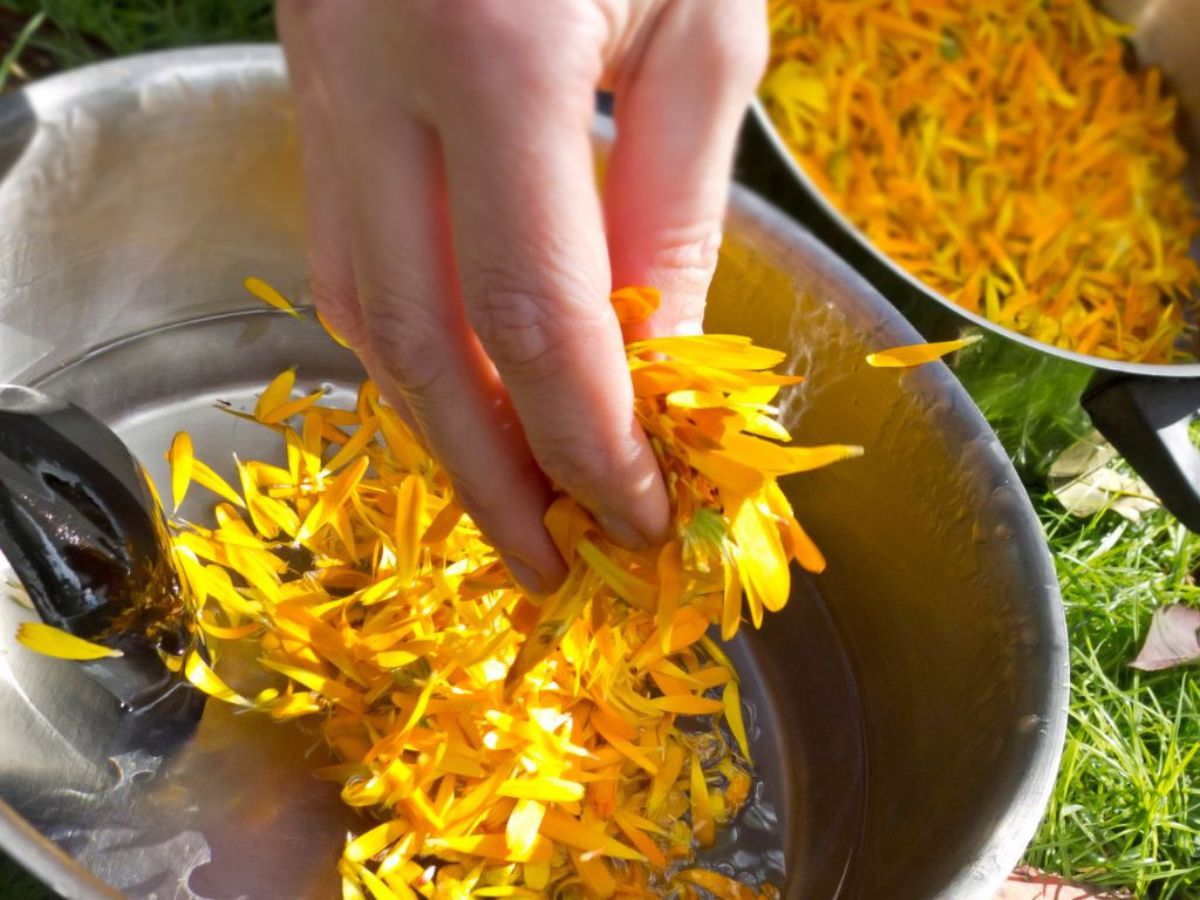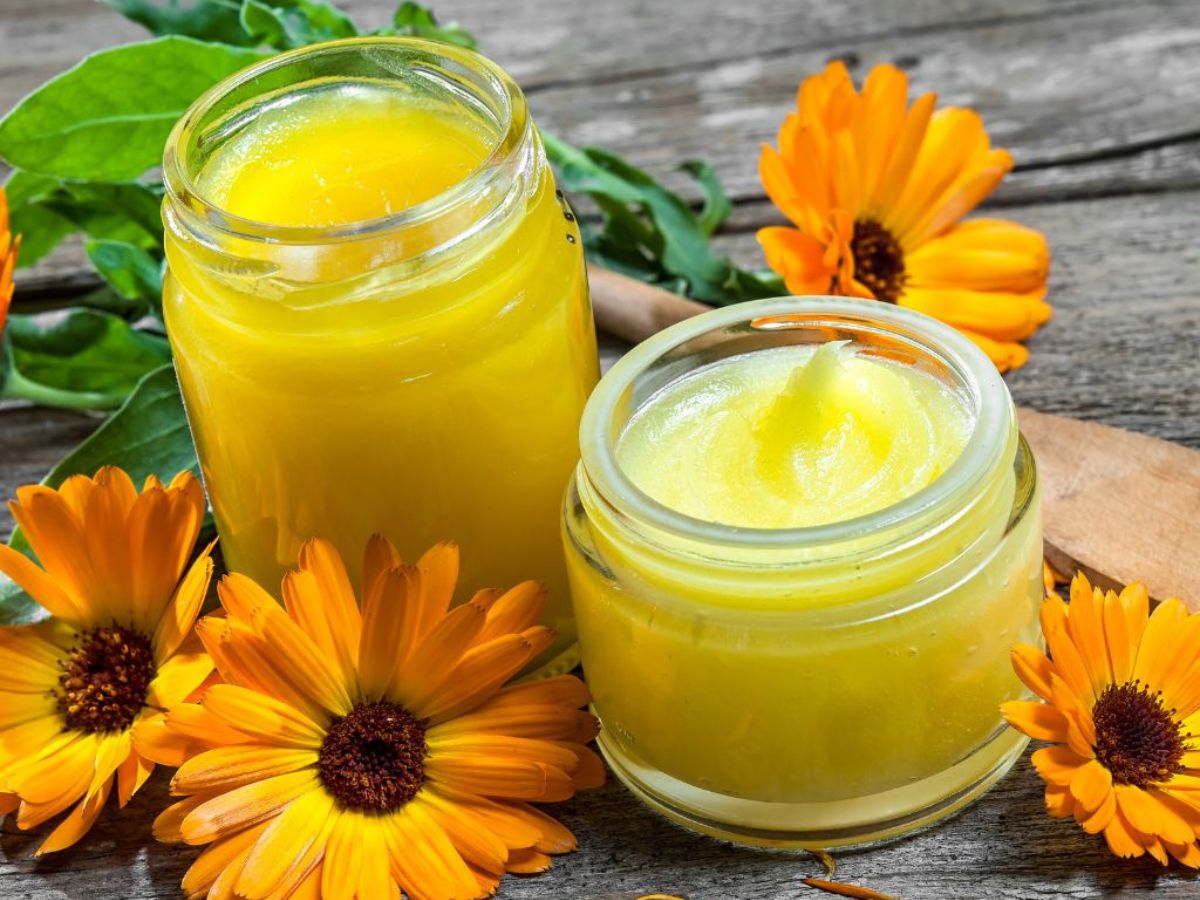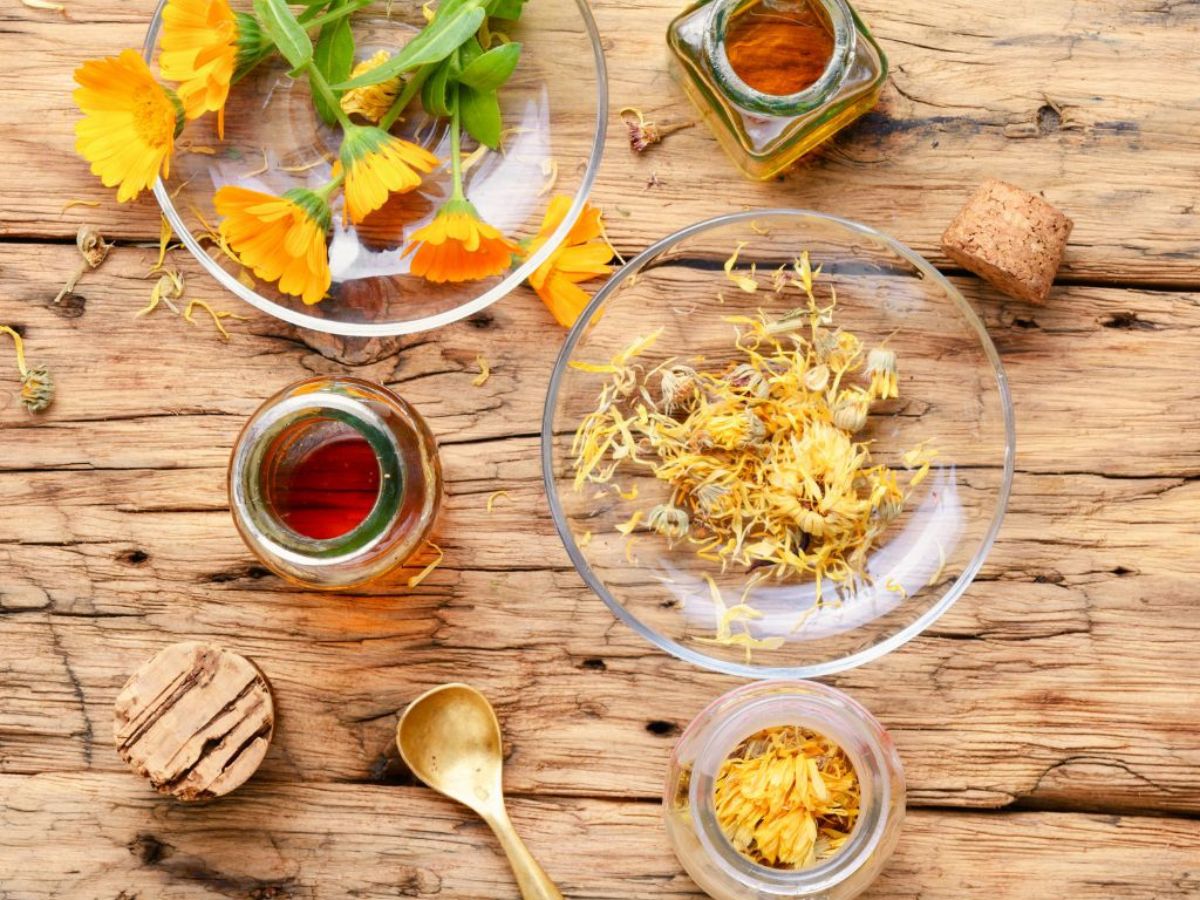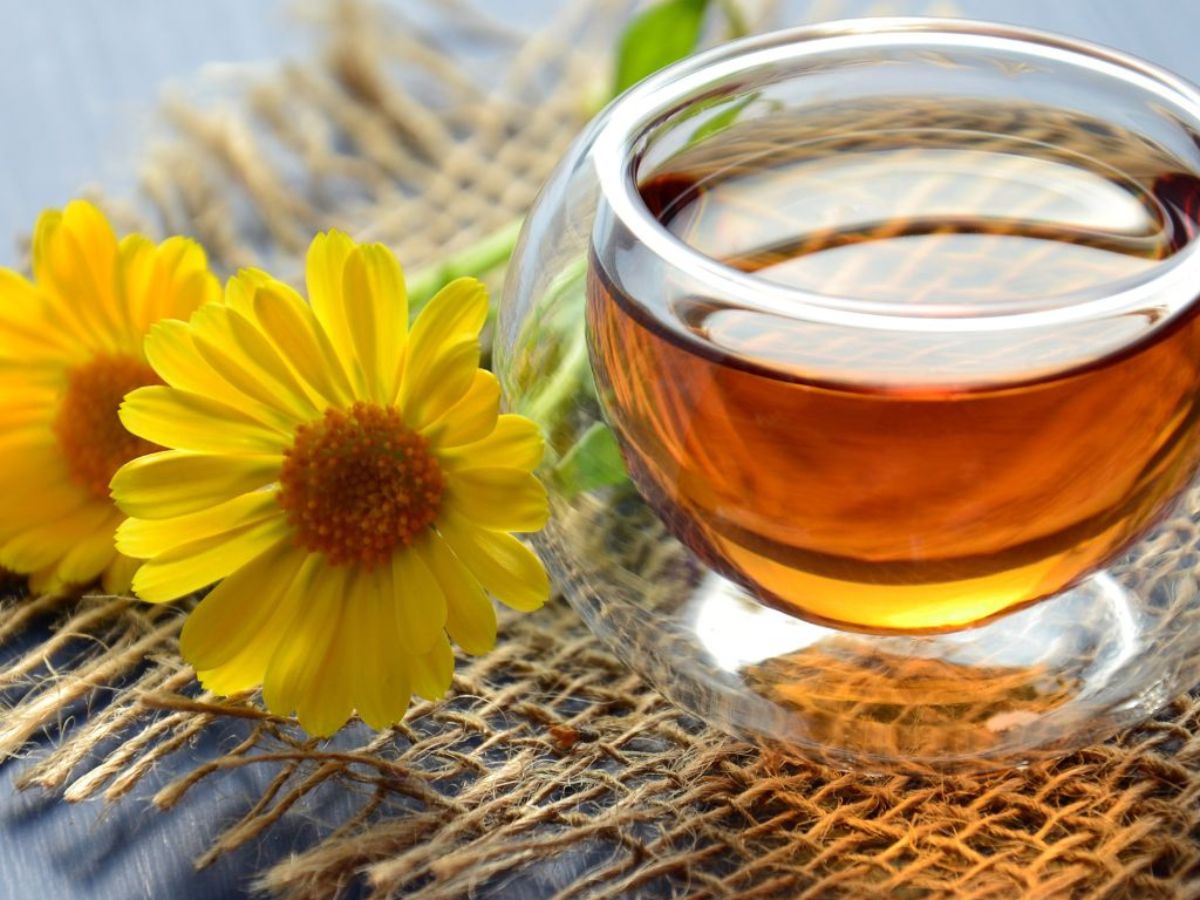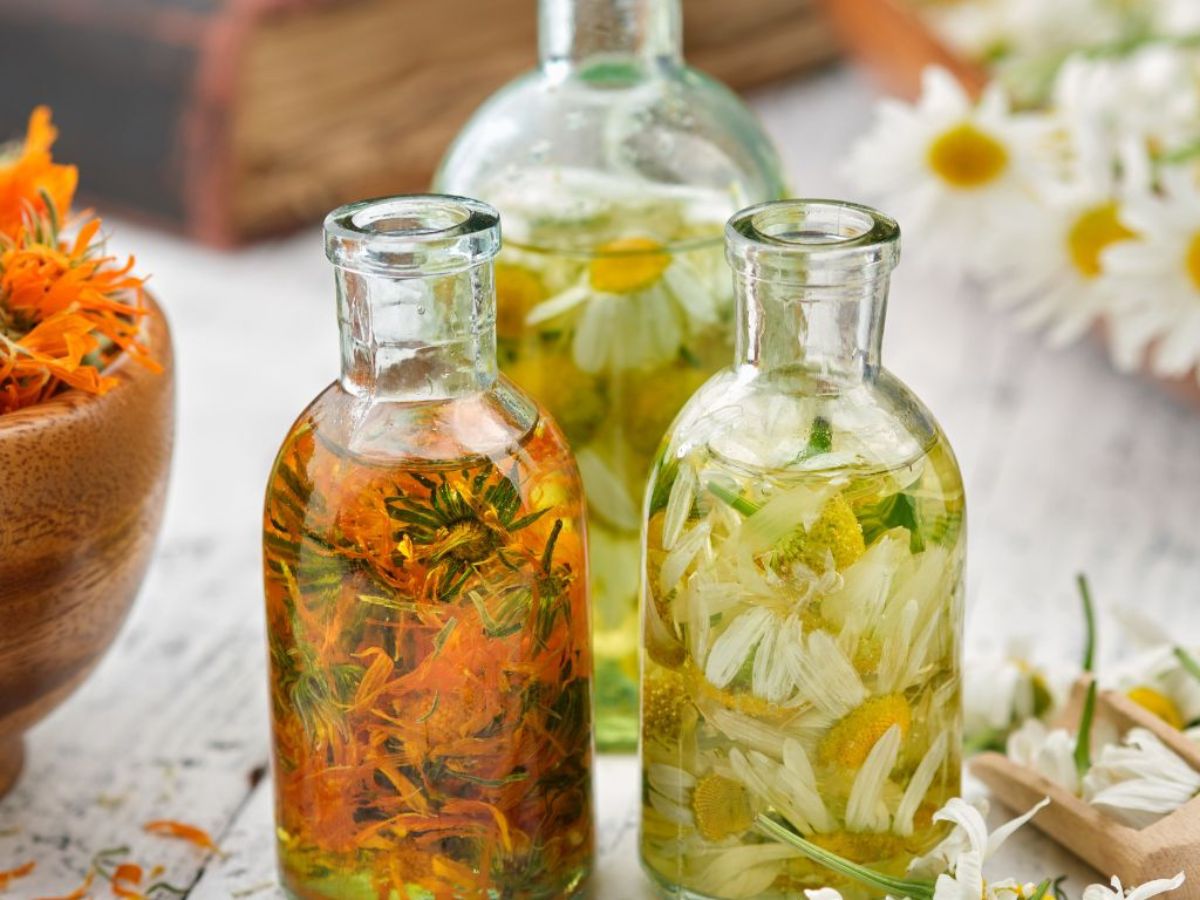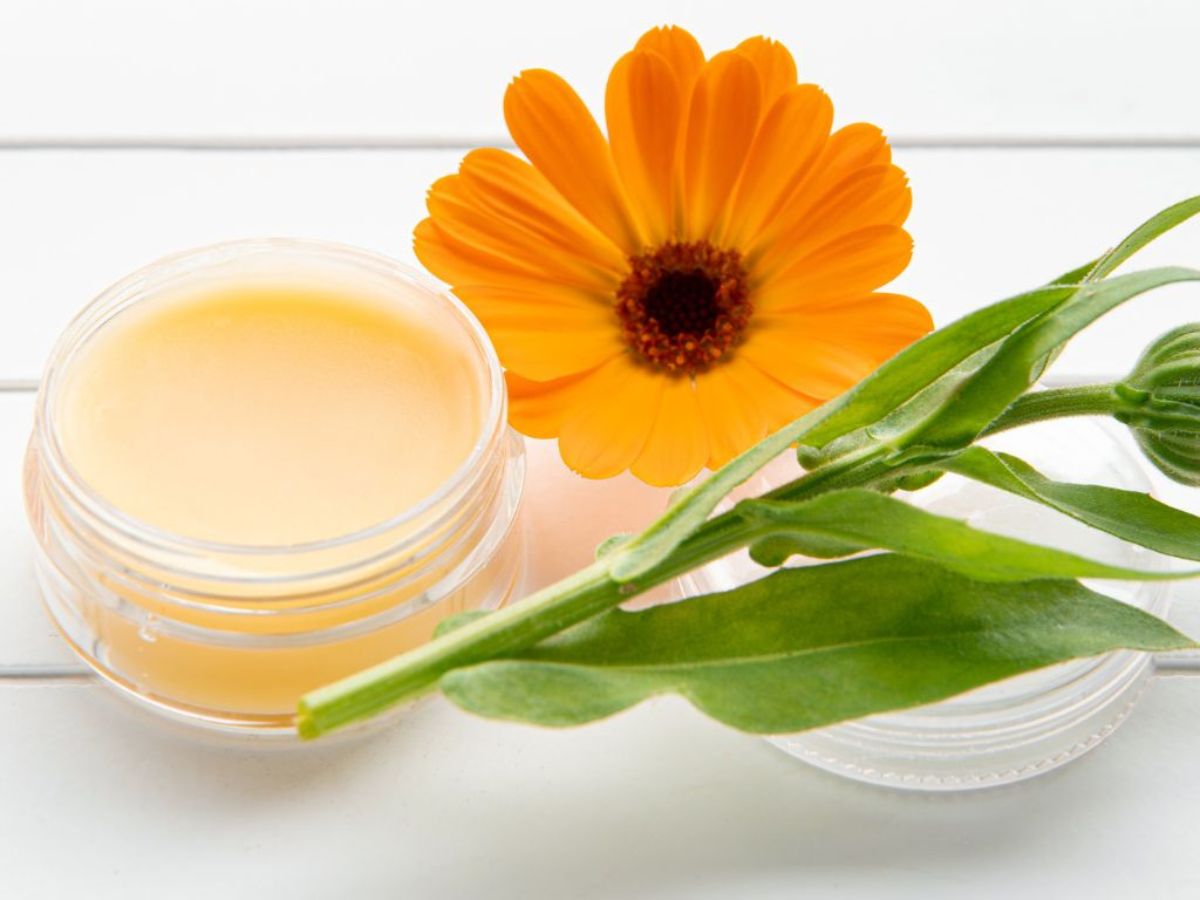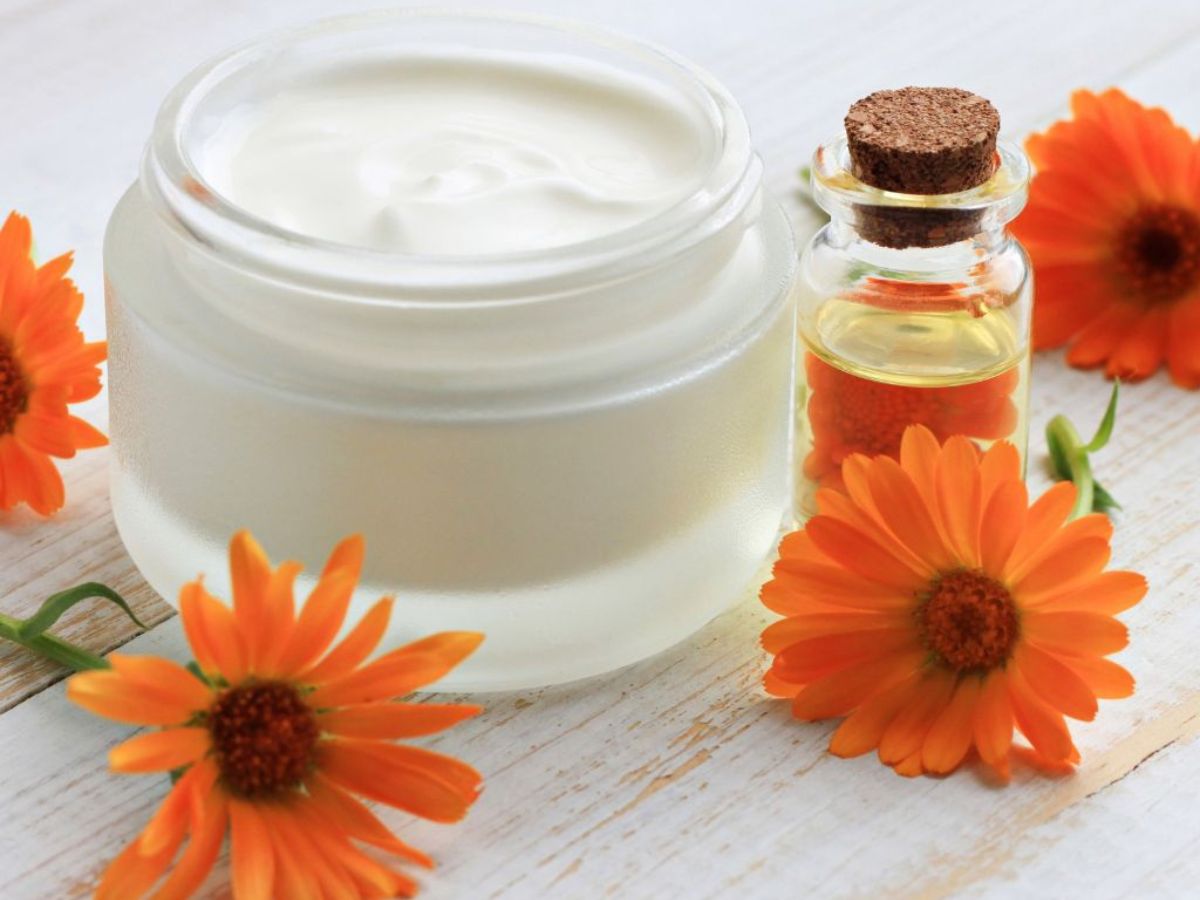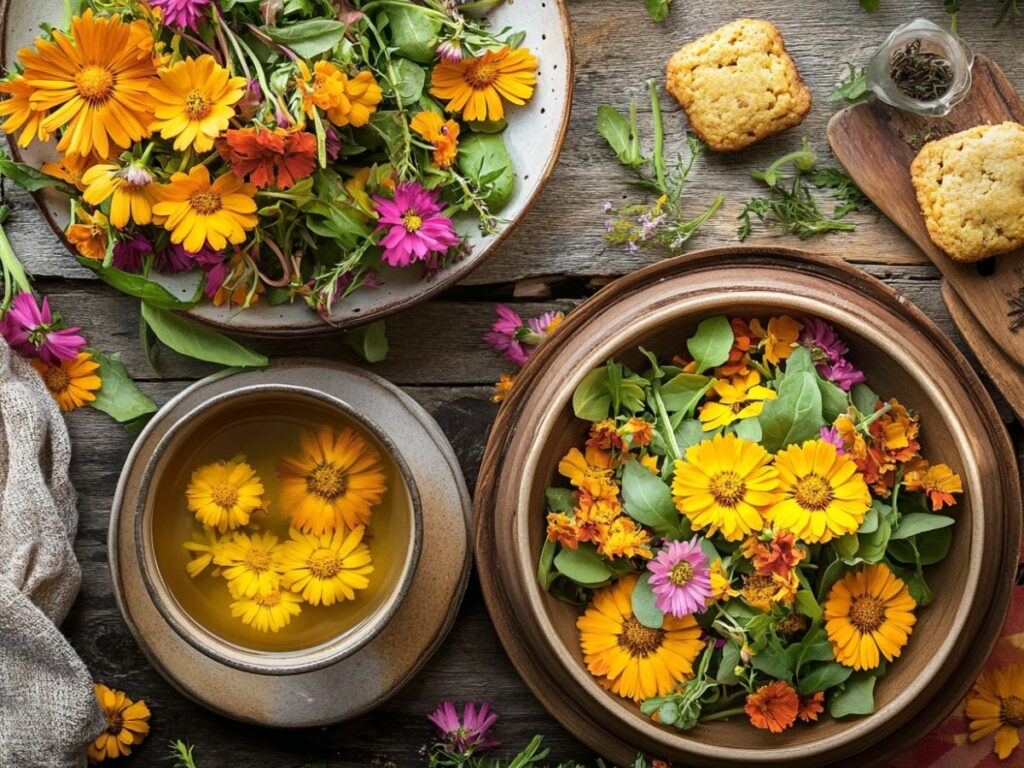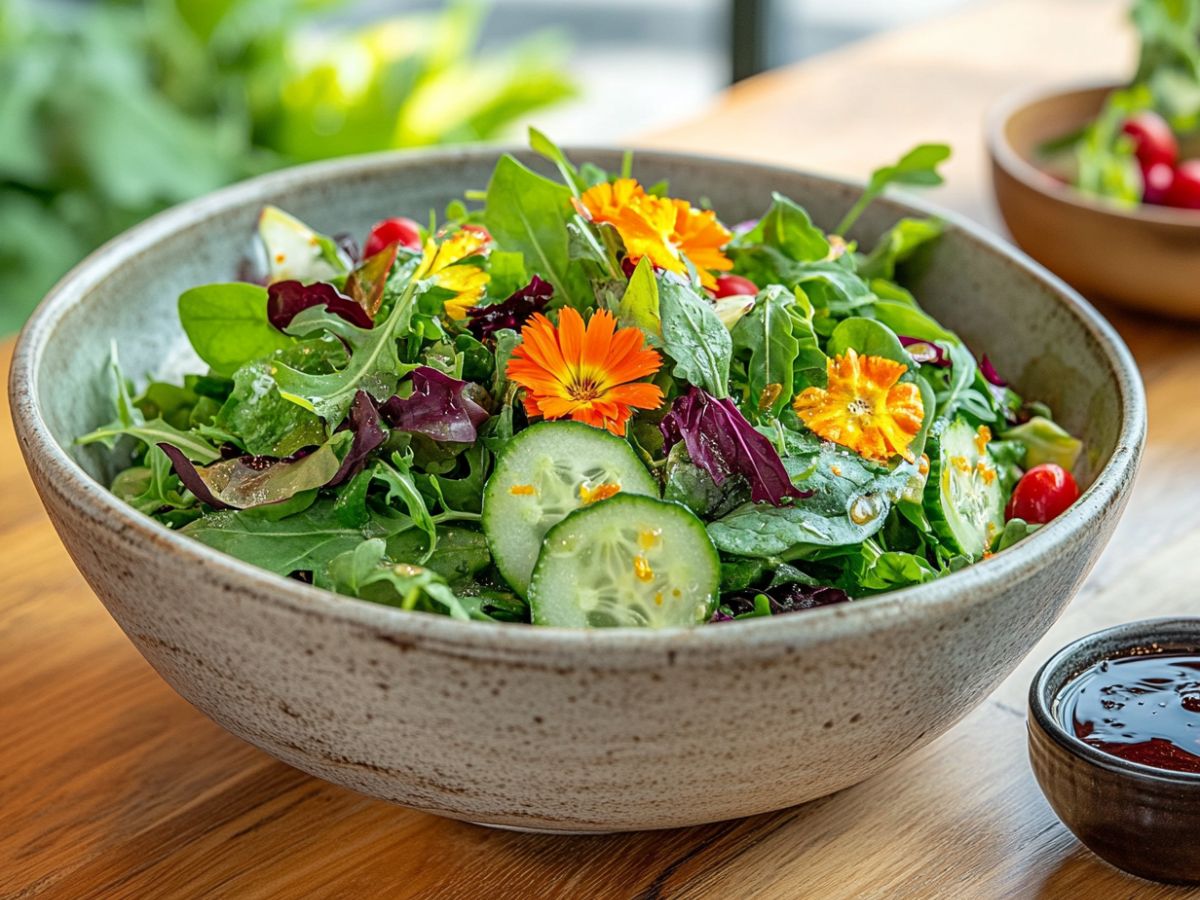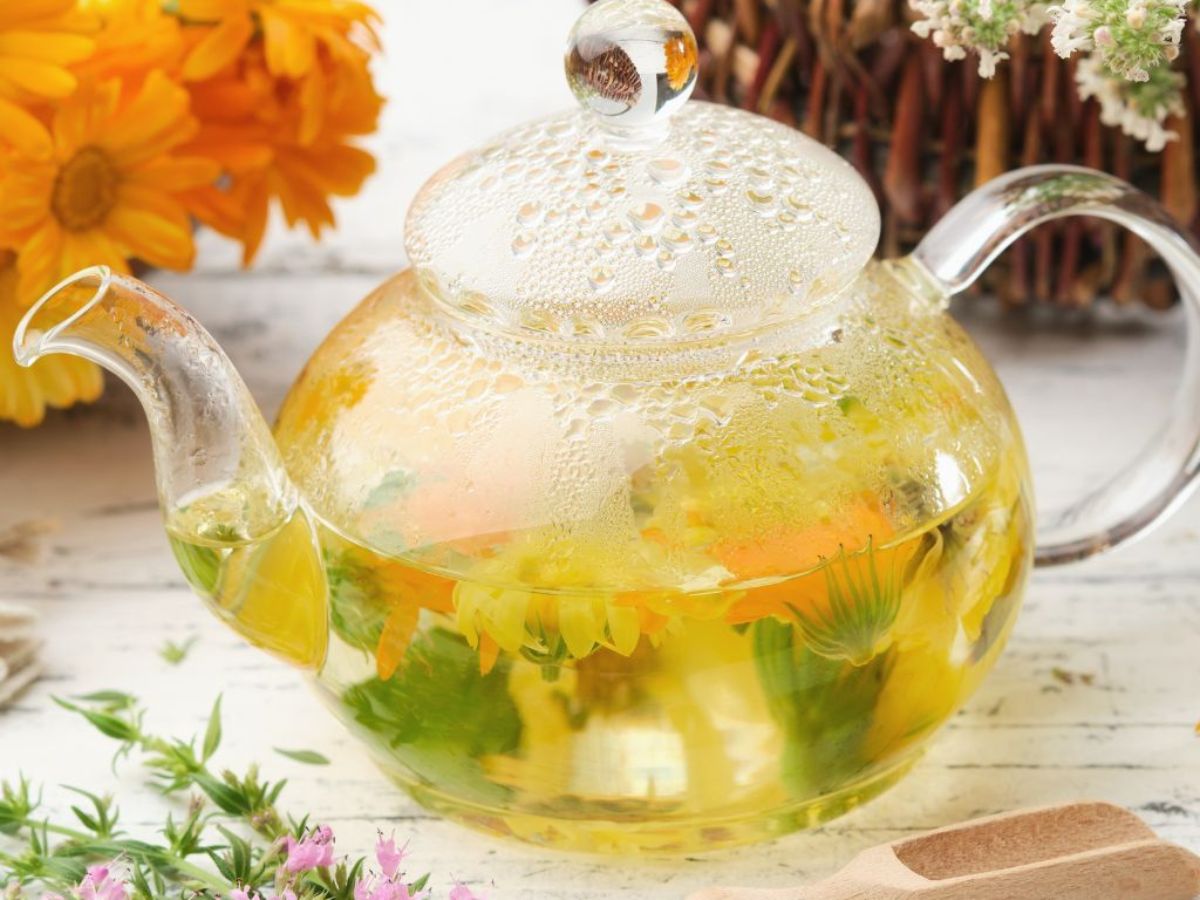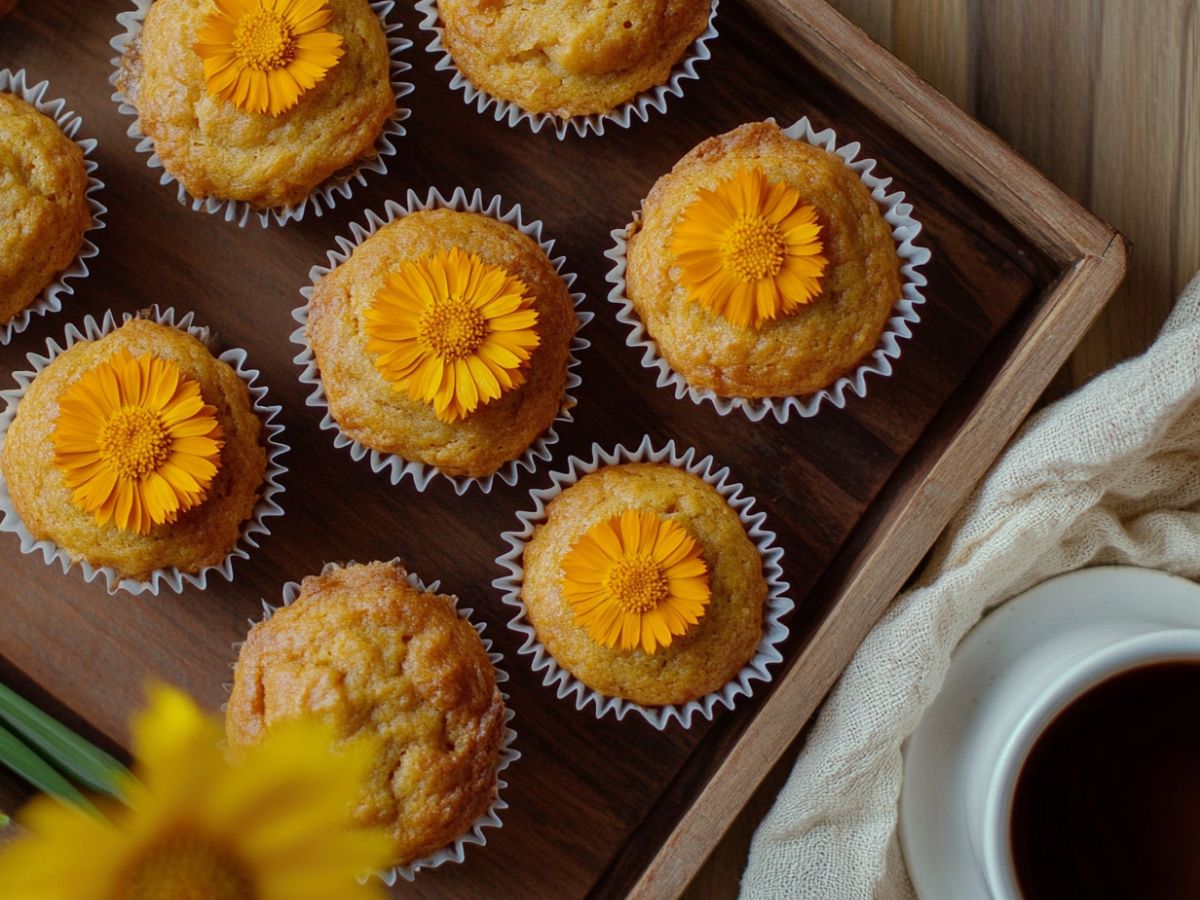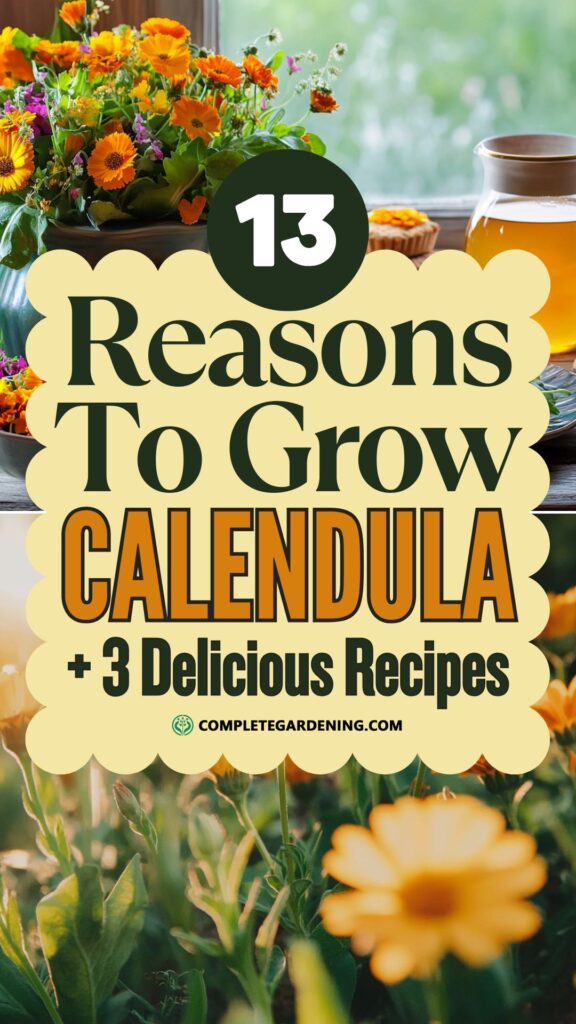Calendula is a bright and cheerful addition to any garden, offering both beauty and utility.
Growing calendula not only enhances your outdoor space, but it also provides a wealth of culinary and medicinal uses, making it an incredibly versatile plant.
With its stunning orange and yellow blooms, calendula attracts pollinators while thriving in various conditions.
You can use these flowers in many delicious recipes, from salads to infused oils, that can elevate your cooking.
If you’re interested in exploring the benefits and uses of this remarkable plant, the following sections will highlight 13 compelling reasons to grow calendula and share 3 delightful recipes to inspire your culinary adventures.
The Charm of Calendula
Calendula, also known as marigold, has been used for centuries for medicinal and ornamental purposes. Ancient Egyptians regarded it as sacred, utilizing it in rituals and skin treatments.
This flower found its way into medieval European gardens, where it symbolized warmth and comfort.
Traditionally, calendula flowers were used to make dyes and skincare products. The plant is known for its resilience, thriving in diverse climates.
You will find it in herbal traditions worldwide, valued for its anti-inflammatory and antiseptic properties. Its rich history illustrates not just its utility but also its deeper cultural connections.
And the aesthetic charm of calendula is undeniable. Its bright orange and yellow petals create a sunny atmosphere in any garden. You may appreciate how these colors attract pollinators, enhancing the ecosystem around your home.
Benefits of Growing Calendula
Growing calendula offers several advantages for your garden. From its ease of cultivation to its ability to enhance soil health, this hardy flower brings numerous benefits that will delight any gardener.
1. Ease of Growing
Calendula thrives in various conditions, making it an excellent choice for both novice and experienced gardeners. It prefers full sun but can tolerate partial shade. The seeds germinate quickly, typically within 7 to 14 days.
Planting Tips:
1. Sow seeds directly in the garden, or start indoors for an earlier bloom.
2. Space plants about 12 inches apart for optimal growth.
3. Moist, well-drained soil promotes healthy development.
Once established, calendula requires minimal maintenance. It’s drought-tolerant and resilient against many common diseases. You’ll appreciate its ability to provide vibrant color throughout the growing season.
2. Pest Repellent Properties
Growing calendula not only adds beauty but also creates a more balanced ecosystem, allowing your garden to flourish without harmful chemicals.
Calendula acts as a natural pest repellent, making it a smart addition to your garden. The flowers emit a scent that deters unwanted insects like aphids and whiteflies, helping to protect nearby plants.
Companion Planting:
1. Position calendula near vegetables like tomatoes and peppers to ward off pests.
2. Its presence can attract beneficial insects, such as ladybugs and lacewings, which prey on harmful pests.
3. Soil Improvement
Calendula can improve soil health by adding nutrients and organic matter. When you allow the plants to decompose after blooming, they enrich the soil as they break down.
Benefits of Soil Enhancement:
Deep roots help aerate the soil, promoting better drainage.
Calendula attracts pollinators, which can support the overall health of your garden.
Rotating calendula with other crops can restore nutrients and improve soil structure. This simple addition contributes to a more sustainable gardening practice, ensuring long-term productivity.
4. Skin Care Benefits
Calendula is celebrated for its skin care properties. You can use calendula-infused oils and creams to help soothe dry or irritated skin. It’s known to enhance skin hydration and promote a healthy glow.
Adding calendula to your skincare routine may help with conditions like eczema or psoriasis. The gentle nature of this flower makes it safe for most skin types. You can easily incorporate it as an ingredient in homemade remedies.
To harness its benefits, try using calendula oil or adding dried petals in your bath for a calming effect. The natural antiseptic properties can help keep your skin clear and fresh.
5. Anti-Inflammatory Effects
Calendula possesses anti-inflammatory properties that can help reduce swelling and redness. You can apply calendula-infused lotions to areas affected by inflammation.
This characteristic makes it useful for conditions like arthritis or muscle strains. Not only does it provide relief, but it also supports faster recovery.
For immediate benefits, consider making a simple calendula tea. Drinking this can help soothe internal inflammation as well, providing a holistic approach to wellness.
6. Healing Wounds and Burns
Calendula has a long history of use for wound healing. Applying calendula ointment or salve can accelerate the healing process of minor cuts, scrapes, and burns.
It works by promoting new tissue growth and reducing the chances of infection. The antiseptic qualities ensure that your wounds remain clean.
You can also use a calendula compress for soothing burns. Soaking a cloth in calendula tea and applying it to the affected area can provide immediate relief and assist in healing.
7. Culinary Uses
Calendula flowers are a beautiful addition to your meals. Their bright yellow and orange petals can add a pop of color to salads, soups, or desserts. You can use them fresh or dried.
Here are some ways to incorporate edible flowers:
Salads: Toss fresh petals into mixed greens for a colorful and nutritious salad.
Garnishes: Use them to decorate cakes, pastries, and other dishes.
Rice or Grain Dishes: Sprinkle dried petals into rice or grain dishes for added flavor and color.
Calendula has a slightly peppery taste, akin to arugula, making it versatile in various recipes. Remember to use flowers from plants that have not been treated with pesticides.
8. Infusions and Teas
Calendula can also be used to create soothing infusions and teas. This process extracts the beneficial properties of the flowers, making a calming drink or a flavorful addition to baking.
To prepare a calendula infusion:
1. Ingredients: Use 1-2 teaspoons of dried calendula petals per cup of hot water.
2. Brewing: Steep the petals for about 5-10 minutes.
3. Strain: Remove the petals and enjoy the tea hot or cold.
You can enhance the infusion by adding lemon or honey, which pairs well with its natural taste. Additionally, calendula-infused oils can be used in salad dressings or drizzled over dishes to add flavor.
9. Calendula Infused Oil
Calendula infused oil is a versatile and beneficial oil made by extracting the properties of calendula flowers into a carrier oil. It’s easy to create and offers a range of uses for skincare and wellness.
Preparation Steps: To make calendula infused oil, gather the following materials:
Dried calendula flowers
A carrier oil (e.g., olive oil, jojoba oil, or sweet almond oil)
A clean glass jar
A strainer or cheesecloth
1. Fill the Jar: Start by filling the jar about halfway with dried calendula flowers. The more flowers you use, the stronger the infusion will be.
2. Add Oil: Pour the carrier oil over the flowers, ensuring they are completely submerged. Leave some space at the top of the jar.
3. Infusion Process: Seal the jar tightly and place it in a warm, sunny spot for 1-2 weeks. Shake it gently every few days to mix the contents.
4. Strain the Oil: After the infusion period, use a strainer or cheesecloth to separate the oil from the flowers. Store the infused oil in a clean, dark glass bottle.
Calendula infused oil has numerous applications in both skincare and general wellness. Here are a few you might find useful:
Moisturizer: Apply the oil directly to dry skin for hydration.
Soothing Agent: Use it for minor burns, cuts, or irritation, as calendula has anti-inflammatory properties.
Massage Oil: Combine it with essential oils for a relaxing massage blend.
Hair Care: Add it to your hair routine for a nourishing scalp treatment.
Lip Balm Base: Incorporate it into homemade lip balms for added moisture.
Explore these options to benefit from this fragrant and healing oil. Enjoy the natural goodness that calendula brings to your daily routine!
10. Calendula Salve
Calendula salve is a versatile remedy known for its soothing properties. It’s easy to make and can be tailored to your specific preferences. This salve is ideal for minor cuts, burns, and dry skin.
How to Make Your Own: Creating your own calendula salve requires just a few ingredients and some basic steps. You will need:
Dried calendula flowers (1 cup)
Carrier oil (such as olive or coconut oil, 1 cup)
Beeswax (1 oz)
Optional essential oils (for fragrance)
Instructions:
1. Infuse the calendula flowers in the carrier oil. Heat it gently in a double boiler for about 2 hours, ensuring it doesn’t boil.
2. Strain the flowers from the oil using a fine mesh strainer or cheesecloth.
3. In a clean pot, combine the infused oil with beeswax. Heat on low until melted.
4. Stir thoroughly and add any essential oils if desired.
5. Pour the mixture into small jars and let it cool completely.
6. Your salve is now ready to use!
Application and Storage: To apply your calendula salve, simply take a small amount and massage it into the affected area. It is particularly beneficial for chapped lips, dry elbows, and minor abrasions. Use it as needed throughout the day.
Keep the salve in a cool, dark place to extend its shelf life. If you notice any changes in smell or texture, it’s best to discard it. Regularly check your supplies and enjoy using your homemade salve!
11. Calendula Tinctures and Tonics
Calendula tinctures and tonics offer you an easy way to harness the medicinal properties of this versatile flower. With a few simple steps, you can create your own tinctures at home and enjoy their numerous health benefits.
To create a calendula tincture, you’ll need dried calendula flowers and a high-proof alcohol, like vodka. Start by filling a clean jar halfway with the dried flowers. Then, pour the alcohol over the petals until they’re completely submerged.
Seal the jar and store it in a dark, cool place for about 4 to 6 weeks. Shake the jar every few days to help extract the beneficial compounds. Once done, strain the mixture through a fine sieve or cheesecloth.
Label your tincture with the date and strain it into a dark glass bottle for long-term storage. This tincture can be used topically or diluted in water for internal use, although you should consult with a healthcare professional before doing so.
Calendula tinctures may support various health benefits. Here are some key effects you might experience:
Anti-inflammatory Properties: Helps reduce inflammation, promoting healing.
Antiseptic Qualities: Useful for minor cuts and scrapes to prevent infection.
Digestive Aid: When consumed, it may help soothe digestive issues.
Consider taking it in small doses, typically 1-2 dropperfuls diluted in water. Always start with a small amount to gauge your body’s response. Keep in mind that individual results can vary, so consult a professional for personalized advice.
12. Calendula in Natural Beauty Products – DIY Face Masks
Creating a face mask with calendula is simple and rewarding. Calendula’s anti-inflammatory properties help soothe irritated skin and reduce redness. Here’s a popular recipe:
Ingredients:
2 tablespoons dried calendula petals
1 tablespoon honey
1 tablespoon yogurt (or aloe vera gel for a vegan option)
Instructions:
1. Prepare the Petals: Infuse the dried petals in a small bowl with warm water for about 10 minutes.
2. Mix Ingredients: Strain the petals and combine them with honey and yogurt or aloe vera.
3. Apply: Spread the mixture evenly on your face and leave it on for 15-20 minutes.
4. Rinse Off: Wash it off with lukewarm water.
This mask can add moisture while repairing your skin’s barrier, leaving it feeling soft and rejuvenated.
13. Homemade Lotions and Creams
Calendula can be included in lotions and creams for its healing and moisturizing properties. It’s especially great for dry or sensitive skin. Here’s a basic lotion recipe:
Ingredients:
1 cup coconut oil
1/2 cup calendula-infused oil
2 tablespoons beeswax pellets
Instructions:
1. Melt Ingredients: In a double boiler, melt coconut oil, calendula oil, and beeswax together until fully combined.
2. Cool Down: Remove from heat and let it cool slightly.
3. Whip (Optional): For a creamier texture, you can whip the mixture once it starts to set.
4. Store: Pour into a clean jar and store in a cool place.
This lotion not only moisturizes but also helps soothe minor irritations and supports skin health. You can customize it by adding essential oils for a personal touch.
Delicious Calendula Recipes
Calendula can elevate your culinary creations with its vibrant color and unique flavor. You can easily incorporate this flower into salads, teas, and baked goods for delightful twists.
1. Salads with a Floral Touch
Adding calendula petals to salads not only enhances the visual appeal but also imparts a subtle peppery flavor. You can mix them with leafy greens, like arugula or spinach, for a refreshing base.
Ingredients:
2 cups mixed greens
1/4 cup calendula petals
1/2 cup cherry tomatoes, halved
1/4 cup cucumber, sliced
Your favorite dressing
Combine all ingredients in a bowl and toss gently. The bright orange and yellow petals will make your salad stand out. This dish is perfect for summer gatherings or light lunches.
2. Soothing Calendula Tea
Brewing calendula tea is simple and provides a calming experience. You can use fresh or dried petals for a soothing drink that supports wellness.
Instructions:
Boil 1 cup of water.
Steep 1-2 teaspoons of calendula petals for 5-10 minutes.
Strain and enjoy.
Feel free to add honey or lemon for extra flavor. This tea can be a great addition to your evening routine, promoting relaxation after a long day.
3. Sweet and Savory Baked Goods
Incorporating calendula into baked goods offers an enticing new flavor. You can use petals in muffins, cookies, or even bread for a creative touch.
Recipe Idea: Calendula Muffins
1 cup all-purpose flour
1/2 cup sugar
1 teaspoon baking powder
1/4 cup calendula petals
1/2 cup milk
1 egg
1/4 cup melted butter
Mix the dry ingredients and stir in the wet ingredients until just combined. Bake at 350°F (175°C) for about 20 minutes. The muffins will have a lovely floral note, perfect for brunch or as a snack.
Calendula, with its vibrant colors and rich history, holds a special place in gardens and kitchens alike. Its appeal goes beyond beauty, delving into its cultural significance and various uses.
